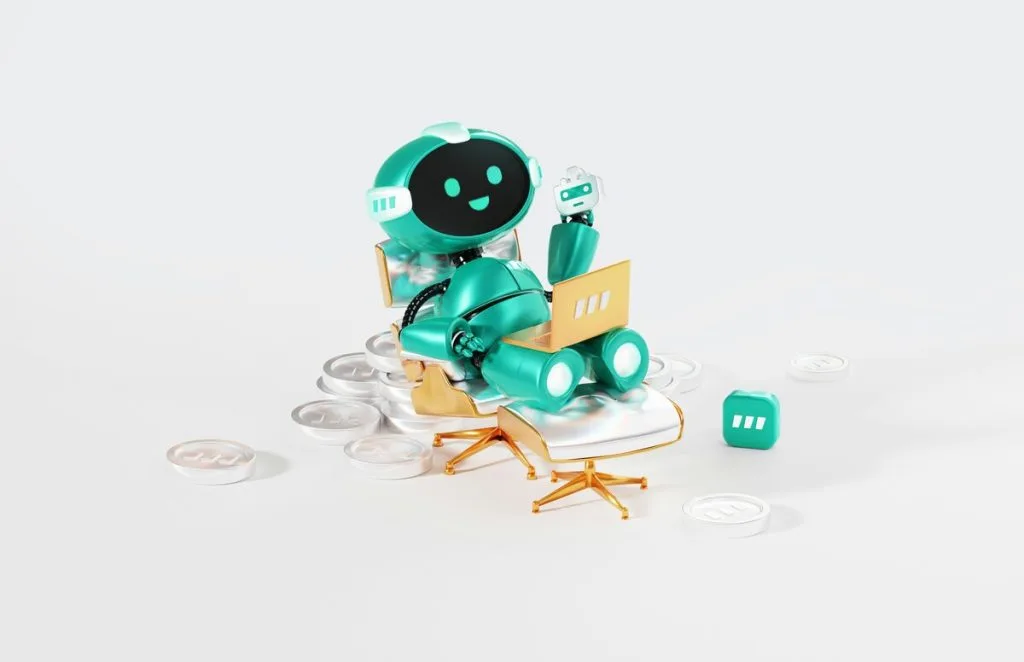Social Media Bots: The Good and The Bad

As automation keeps advancing, social media bots have become a regular feature of digital marketing and online interactions. Many brands rely on bots to boost customer support, schedule posts, and pull useful data. But while these tools can be helpful, they’ve also sparked debate, especially when used to inflate engagement numbers or spread false information. In this article, we’ll take a closer look at what social media bots are, how they’re used, and where the line between helpful and harmful gets blurry.
What are Bots on Social Media?
In simple terms, social media bots are software programs built to carry out tasks automatically. Some are basic and only handle simple jobs, while others are more advanced, capable of mimicking human behavior and reacting to users in real time.
Here are a few types of bots you might come across:
- Chatbots: Found on websites, social platforms, and messaging apps, these bots answer questions, help with customer service, and hold conversations.
- Social Media Bots: These handle automated actions like liking, commenting, or following. Some help manage accounts, while others are used to spam or fake popularity.
- Web Crawlers: Also called spiders, they scan websites and gather info, mainly to help search engines index content.
- Shopping Bots: These help users track prices, check stock, and snag limited-release products.
- Gaming Bots: In games, bots often fill in for real players, helping users practice or play multiplayer.
- Malicious Bots: Designed with bad intentions, these bots spread spam, steal data, or launch cyberattacks like DDoS.
Types of Social Media Bots
Social media bots run on scripts and algorithms that allow them to carry out actions like posting or messaging without human input. They’re typically programmed to follow certain rules or respond to specific triggers.
These bots tend to fall into two camps: the ones that serve a legitimate purpose and the ones that don’t. Let’s break them down.
1. Benign Social Media Bots:
These bots are built to support brands and users in a helpful, ethical way. They can improve customer interactions, keep content flowing, and personalize the user experience. Common uses include:
- Customer Support: Bots can handle frequent questions, respond instantly, and provide 24/7 help. This lets human support teams focus on more complicated issues.
- Content Scheduling: Posting bots help brands stay active on social platforms without the need to post manually each time.
- Content Suggestions: Some bots analyze user activity and offer tailored recommendations for content or products, creating a more relevant experience.
2. Malicious Social Media Bots:
These bots serve less honest purposes and often cause more harm than good. They skew metrics, mislead audiences, and in some cases, spread misinformation. Examples include:
- Spreading False Info: Some bots are set up to push misleading stories or propaganda to influence public opinion.
- Faking Engagement: Bots can be used to make posts look more popular than they really are by inflating likes, comments, or followers.
- Spam and Scams: These bots post repetitive promotional content, phishing links, or fake offers to trick users.

Using Bots for Brand Management
When used the right way, bots can be pretty useful for businesses looking to manage their online presence more effectively and efficiently. Here’s how:
- Customer Support: Chatbots can handle routine questions and improve response time, leaving room for the human team to deal with more complex issues.
- Content Management: Bots can take over parts of the content calendar, making sure posts go out on time and keeping things consistent.
- Data Insights: Bots can sift through large sets of data to help brands understand customer habits and track how well campaigns are doing.
- Personalized Marketing: With the help of AI, bots can recommend specific products or content based on individual user behavior.
- Lead Generation: Some chatbots help answer pre-sales questions, walk users through a buying process, or collect basic info to qualify leads.
Chatbots in Social Media Marketing
Chatbots play a big role in social media marketing today, especially as more brands focus on building direct and personal relationships with their audiences. They support real-time communication, making it easier for businesses to connect with customers in a way that feels natural and conversational.
- Automated Messaging: Chatbots respond quickly to customer inquiries, addressing common questions and reducing response times, while leaving your customer support team to handle more complex issues.
- Conversational Marketing: More than just answering FAQs, bots can guide users through product recommendations, services, or sign-up flows by mimicking a real conversation. This makes interactions feel more personal and helps brands connect with users on a one-to-one level.
- Personalized Interactions: Bots use data to offer tailored responses, product recommendations, and relevant information, creating a more personalized experience.
- Multi-Platform Integration: Advanced bots work across platforms like Facebook Messenger, Instagram, WhatsApp, and Twitter, so you can keep a consistent brand voice and uniform customer service.
- 24/7 Availability: Unlike humans, bots are always on, allowing customers to get assistance or information at any time of day or night, which can boost conversion rates and customer satisfaction.
- Data Collection: These interactions also give you access to useful customer data. When paired with Metricool’s analytics, you can turn these insights into smarter social media strategies, targeted content plans, and improved customer touchpoints.
The Dark Side of Social Media Bots: Malicious Bots and Engagement Farming
Despite their benefits, bots are frequently misused in practices like “engagement farming.” This is when bots are used to boost likes, shares, followers, and comments artificially to make a post or account seem more popular. It tricks algorithms, misleads real users, and can ultimately hurt a brand’s reputation. Over time, platforms may penalize accounts that rely too much on these fake signals.
How to Spot Malicious Bots
Knowing what a bot looks like can help you avoid falling for spam or scams. Some red flags to watch for:
- Basic or Empty Profiles: Bots often use generic usernames, have little to no bio, and use low-quality or mismatched profile pictures.
- Awkward Wording: Many bots post with strange grammar, repetitive phrases, or auto-translated text.
- Weird Timing: If an account replies instantly at odd hours or posts at all hours of the night, it might be automated.
- High Volume Posting: Posting too much in a short time span is another red flag.
- Low Interaction: A bot may have thousands of followers but barely any likes or comments on its posts.
- Copy-Paste Content: Many bots post the same content repeatedly across multiple accounts.

Ethical and Legal Considerations of Social Media Bots
As bots become more advanced, new ethical and legal issues are popping up. Some areas to think about:
- Privacy: Bots often collect user data, which can be a privacy concern if users aren’t aware of what’s happening behind the scenes.
- Following the Rules: Certain countries have introduced rules around bots, especially in politics or public discourse, to prevent manipulation.
- Being Transparent: There’s growing pressure for bots to identify themselves clearly so users know when they’re not interacting with a real person.
Impact of Bots on Social Media Algorithms
Bots can throw off platform algorithms by flooding posts with fake engagement. These inflated numbers can boost visibility for content that doesn’t actually deserve it, pushing down more genuine posts. This impacts user experience and gives a skewed sense of what’s trending.
To fight back, platforms update their algorithms regularly. AI tools and machine learning help detect suspicious behavior, like sudden spikes in activity or repeated actions, and reduce the influence of fake engagement.
Emerging Technologies in Bot Development
Bot technology is getting more advanced every year. Some developments to watch:
- Smarter Language Processing: Bots are getting better at understanding and responding in natural language, making conversations feel more human.
- Blockchain Tech: Developers are testing blockchain for bots to create more transparency and traceability in interactions.
- AI and Machine Learning: These tools allow bots to adapt in real time, improve over time, and deliver more relevant interactions.
Cross-Platform Social Media Bot Networks
Some bot networks now work across multiple social media platforms at once. These bots can push messages, promote content, or collect user data from several places at the same time. For brands, this can mean deeper insights and better service. But it also opens the door to unethical behavior.
When used the wrong way, cross-platform bots can push misinformation across different channels at once, giving false narratives more reach than they deserve.
Social Media Bot Detection and Mitigation Strategies
To protect users and keep the online space healthier, platforms are stepping up their game with smarter tools and user education:
- Detection Systems: Algorithms help find bot-like behavior based on timing, language, posting habits, and engagement patterns.
- User Awareness: Some platforms offer tips or resources to help users spot bots or fake profiles.
- Clean-Up Tools: There are tools that help brands and users filter out bot interactions, remove fake followers, and keep their metrics accurate.
Social Media Bots: Helpful or Ultimately Harmful?
Social media bots aren’t going anywhere, and like any tool, their impact depends on how they’re used. When applied responsibly, they can save time, improve customer experiences, and support stronger marketing strategies. On the flip side, bots that generate fake engagement or spread misinformation can damage trust and distort results.
As you build your social media presence, it’s worth staying informed, using automation thoughtfully, and turning to platforms like Metricool to help you stay focused on what really matters: real content, real insights, and real connections.

